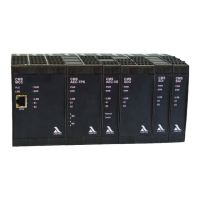
Do you have a question about the Lamtec CMS and is the answer not in the manual?
| Manufacturer | Lamtec |
|---|---|
| Input Voltage | 24 VDC |
| Operating Temperature | -20°C to +60°C |
| Protection Class | IP20 |
| Category | Control Systems |
| Communication Interface | RS485 |
| Protocol | Modbus RTU |
| Type | Combustion Management System |
| Relative Humidity | 10% to 90% (non-condensing) |
Explains the meaning of danger, warning, caution, and notice symbols used in the manual.
Defines the intended audience and prerequisites for reading the manual and operating the device.
Highlights specific safety risks and precautions related to the CMS device itself and its components.
Provides essential guidelines for correctly and safely installing the CMS system and its components.
Details critical electrical wiring and connection procedures to ensure safe installation.
Outlines key safety checks and procedures required during the initial setup and commissioning phase.
Explains the proper methods and precautions for connecting flame sensors to the CMS.
Details the MCC, its safety features, technical specifications, and functional description.
Describes the AEC-TPS module for controlling three-point step actuators, including safety and technical data.
Explains the AEC-VS module for variable speed actuators, focusing on safety, technical data, and functionality.
Covers the SDI module for failsafe digital inputs, including safety, technical data, LEDs, and functional description.
Details the SDO module for failsafe digital outputs, covering safety, technical data, LEDs, and functional description.
Explains the SAI module for safe analogue inputs, including safety, technical data, terminal configuration, and functional description.
Refers to checklists and system tests required for final commissioning and documentation.
Covers the importance and methods for checking shut-off limits to ensure safe and stable flame burning.
Covers the use of CMS Remote Software for visualizing, editing, and storing parameter and curve data.
Lists critical factors for actuator set-point values and correctional intervention parameters for safe operation.
Explains how the CO controller maintains combustion within a safe range and manages correction signals.
Explains manual and automatic procedures for resetting faults related to CO/O2 control and monitoring.
Outlines guidelines for commissioning the CO/O2 controller and putting the electronic ratio control system into operation.
Provides a step-by-step procedure for commissioning the CO/O2 control system, including checks and parameter settings.
Details how to check and ensure stable burner operation at O2 monitoring shut-off limits, including testing correction effect.
Guides on setting and optimizing the CO response threshold on the LT3-F for CO regulation.
Provides instructions for commissioning CO/O2 control, including fault resetting and operating via PC remote software.
Discusses automatic and manual restart configurations for faults, emphasizing safety compliance.
Provides instructions for updating the CMS firmware, including connection setup and software flashing procedures.